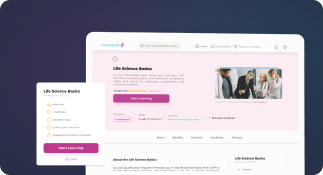Specification Limit (Quality Limits & Acceptance Criteria)
Definition
A Specification Limit refers to the defined range of acceptable values for a quality attribute of a pharmaceutical product, raw material, or process. These limits are established to ensure the product meets regulatory, safety, and efficacy standards. Specification limits are often synonymous with quality limits or acceptance criteria and are critical components of quality control (QC) testing.
They serve as benchmarks during manufacturing and testing, providing a clear boundary between acceptable and unacceptable product performance or characteristics.
Detailed Explanation
Purpose of Specification Limits
Specification limits are implemented to ensure consistency, safety, and efficacy in pharmaceutical and life sciences products. These limits are derived from clinical data, manufacturing capabilities, and regulatory requirements. Their primary purpose is to:
- Ensure product compliance with regulatory standards (e.g., FDA, EMA, ICH).
- Define acceptable variability in raw materials, intermediates, and finished products.
- Support batch release decisions based on validated quality attributes.
Types of Specification Limits
Specification limits can be categorized into:
- Upper Specification Limit (USL): The maximum acceptable value for a quality attribute.
- Lower Specification Limit (LSL): The minimum acceptable value for a quality attribute.
- Target Value: The ideal value within the range, often used for process optimization.
Examples of Specification Limits in Use
Specification limits are applied across various stages of pharmaceutical production:
- Assay of Active Pharmaceutical Ingredient (API): 98.0% to 102.0% of label claim.
- pH of a solution: 6.8 – 7.2.
- Moisture content: Not more than 5.0%.
For instance, if a tablet formulation has a specification limit for hardness between 5–8 kiloponds, any batch falling outside this range would be considered non-compliant and may be rejected or reprocessed.
Establishing Specification Limits
Specification limits are defined during the product development phase and are based on:
- Preclinical and clinical data.
- Manufacturing process capability studies.
- Stability data.
- Regulatory guidance and pharmacopeial standards (e.g., USP, EP).
These limits are documented in regulatory filings such as the Common Technical Document (CTD) and must be justified with scientific rationale.
Regulatory Importance
Specification limits are a regulatory requirement under Good Manufacturing Practices (GMP). Regulatory agencies such as the FDA, EMA, and ICH require that all critical quality attributes (CQAs) have defined and validated limits. Deviations from these limits must be investigated and documented under a deviation or non-conformance report.
ICH Q6A and Q6B provide guidance on setting specification limits for new drug substances and biotechnology-derived products, respectively.
Specification Limits vs. Control Limits
It’s important to differentiate between specification limits and control limits:
- Specification Limits: Set externally based on product requirements and regulatory needs.
- Control Limits: Set internally based on process performance and statistical data (used in Statistical Process Control).
While specification limits define what is acceptable to the customer or regulator, control limits help monitor and improve the manufacturing process.


